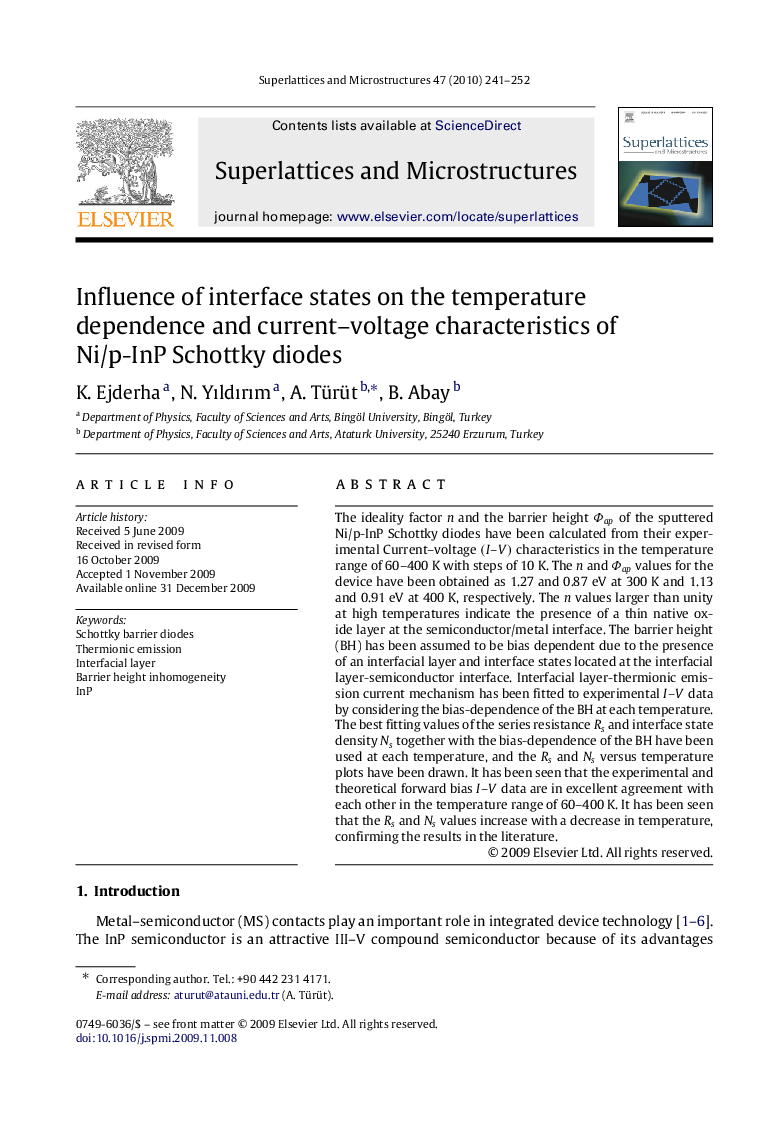| Article ID | Journal | Published Year | Pages | File Type |
|---|---|---|---|---|
| 1554486 | Superlattices and Microstructures | 2010 | 12 Pages |
The ideality factor nn and the barrier height ΦapΦap of the sputtered Ni/p-InP Schottky diodes have been calculated from their experimental Current–voltage (I–V)(I–V) characteristics in the temperature range of 60–400 K with steps of 10 K. The nn and ΦapΦap values for the device have been obtained as 1.27 and 0.87 eV at 300 K and 1.13 and 0.91 eV at 400 K, respectively. The nn values larger than unity at high temperatures indicate the presence of a thin native oxide layer at the semiconductor/metal interface. The barrier height (BH) has been assumed to be bias dependent due to the presence of an interfacial layer and interface states located at the interfacial layer-semiconductor interface. Interfacial layer-thermionic emission current mechanism has been fitted to experimental I–VI–V data by considering the bias-dependence of the BH at each temperature. The best fitting values of the series resistance RsRs and interface state density NsNs together with the bias-dependence of the BH have been used at each temperature, and the RsRs and NsNs versus temperature plots have been drawn. It has been seen that the experimental and theoretical forward bias I–VI–V data are in excellent agreement with each other in the temperature range of 60–400 K. It has been seen that the RsRs and NsNs values increase with a decrease in temperature, confirming the results in the literature.
